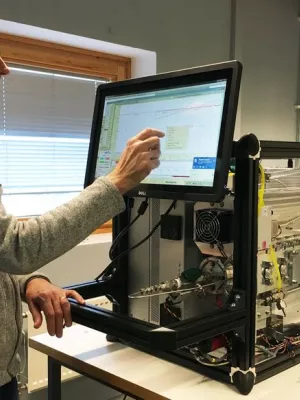
Erik Swietlicki
Professor

Relating the single particle soot photometer (SP2) signal response to soot maturity
Author
Summary, in English
Light absorbing carbonaceous aerosols produced from combustion span over a range of physicochemical properties. Soot is the most recognized species in this category and its formation process involves gradual maturation from amorphous young soot with a high hydrogen-to-carbon-ratio toward mature soot aggregates. In this work, the optical response of a single particle soot photometer (SP2) to electrical mobility size selected soot of different maturity produced by a mini-CAST soot generator is investigated. The results show that for soot of a specific mobility diameter, the laser-induced incandescence (LII) signal appears earlier and with a higher LII peak height for increasing soot maturity. The experimental observations are supported by simulations using a numerical model for the LII process. Furthermore, the effect of systematically varying the SP2 laser power on the detection of soot of different maturity using LII is explored. This work can be seen as a step toward the aim of using the SP2 instrument to identify soot particles of different maturity in the atmosphere.
Department/s
- Nuclear physics
- MERGE: ModElling the Regional and Global Earth system
- LTH Profile Area: Aerosols
- NanoLund: Centre for Nanoscience
- LTH Profile Area: Nanoscience and Semiconductor Technology
- LU Profile Area: Light and Materials
- Combustion Physics
- Dept of Physical Geography and Ecosystem Science
- LTH Profile Area: The Energy Transition
- Metalund
- Ergonomics and Aerosol Technology
- LTH Profile Area: Photon Science and Technology
- LU Profile Area: Nature-based future solutions
- Consortium for Aerosol Science and Technology at Lund University (CAST)
- Centre for Environmental and Climate Science (CEC)
Publishing year
2024-04-25
Language
English
Publication/Series
Aerosol Science and Technology
Document type
Journal article
Publisher
Taylor & Francis
Topic
- Atom and Molecular Physics and Optics
Status
Epub
ISBN/ISSN/Other
- ISSN: 1521-7388